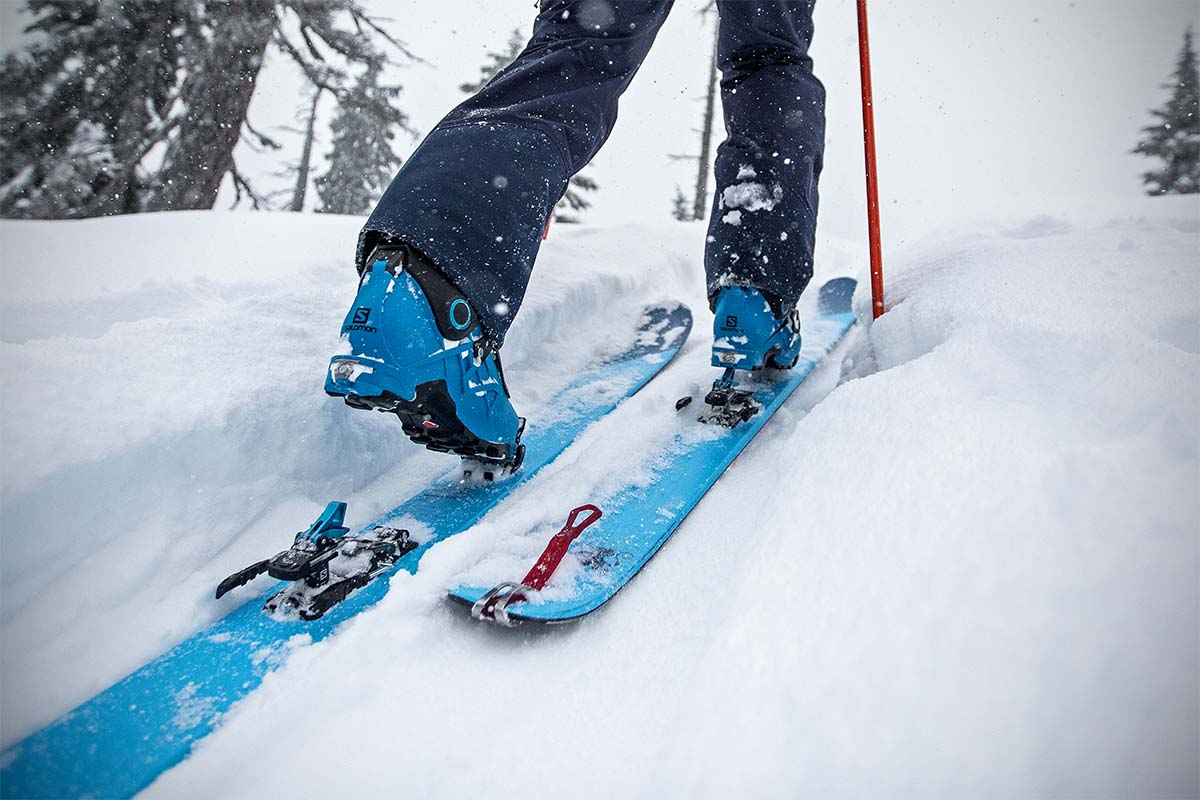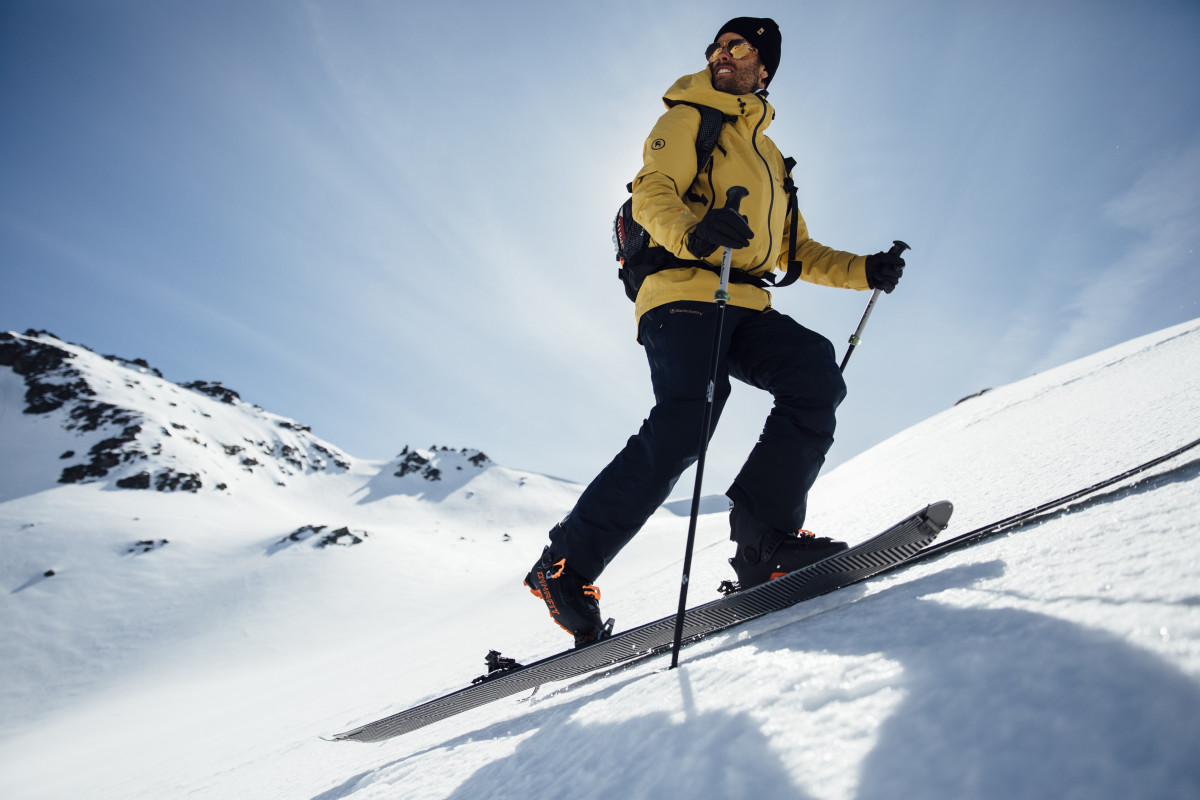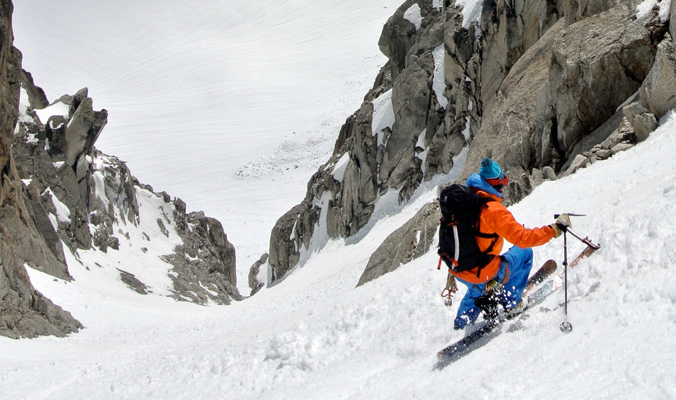
In today’s day and age, it seems like wide skis continue to get more and more popular. While the mid-fat ski has brought a powder revolution with increased flotation, there are also severe downsides to a wide ski, especially in the backcountry.
First of all, we must define a “fat ski.” Generally speaking, 105-120mm underfoot is in the mid-fat range. Most all-mountain skis tend to fall into this category these days. Anything wider underfoot than that becomes what we like to call “pontoons.” Boats for your feet so you won’t sink.
Let’s break down some reasons why a narrower backcountry ski might be a good idea for you.
#1. Weight

When it comes to backcountry skiing, weight is everything. Less weight to lug uphill means a happier day. Just a few hundred grams can mean the difference between 3 and 4 laps or success and failure on a big objective. Ski widths are one of the biggest determinates of ski weight. For example, on a 180cm ski, shaving as little as 5mm underfoot means you’re losing 5mm x 180cm worth of material, which can add up fast. By going with a skinnier ski, you can save quite a bit of energy on the skin track.
#2. Stability

After a long hike up, enjoying the down is a priority. Stability – meaning dampened chatter and noise – is key to an enjoyable downhill, especially in non-ideal snow conditions. It may seem a bit counter-intuitive, but a skinner ski is more stable than a wider ski. This is why you don’t see race skiers on 110mm underfoot. Instead, they lean more towards super skinny skis (70mm or less) to maintain stability during the race.
#3. Turn speed
A skinnier ski will be easier to turn. It will maneuver easier from edge to edge and is much easier to pop up off the slope to perform a hop turn.

When it comes to choosing a backcountry ski width, you just need to know what sort of terrain you’ll be skiing on. If you’re a powder hound who loves winter powder, maybe a skinny ski isn’t for you, due to the lack of floatation they provide and the fact that you won’t be skiing much hard snow where the dampening of a skinnier ski would be warranted. If you’re a ski mountaineer, most of your skiing will be done in the spring or summer, when alpine roads open and the snowpack “ripens” (corn, anyone?!). In this case, where springtime melt/freeze cycles will often render the snow surface less than ideal, the dampening of a narrower ski may be welcomed. For a ski mountaineer, the ease of being able to quickly turn the skis is important in consequential terrain.
Narrow skis are awesome, and the great thing is that a skinnier ski isn’t necessarily just limited to bad snow. In winter, a 95mm underfoot ski will perform just fine in moderately deep powder. There are probably less than 5% of days where a mid-fat or fat ski would have the advantage over a narrower ski.
This is by far the worst piece of advice that I have ever seen. “Weight is everything” “skinny skis are more maneuverable” “There are probably less than 5% of days where a mid-fat or fat ski would have the advantage over a narrower ski” – what BS!!! I guess your right if your skinning uphill on a resort in vermont but that is NOT backcountry skiing!
Snow Brains you should be ashamed
great article! one additional point for skinnier skis; it makes pie deeper! 4 inches of fresh on fat skis may as well be a groomer! but on old school sticks it’s time for face shots! tele gear has a similar effect, drop your knee and your a foot closer to the cold smoke!
I agree. My backcountry quiver has slowly gotten narrower, and I find my 95mm skis being the go-to more and more. With modern ski shapes (rocker, taper) you don’t need a super-wide ski to achieve good float, especially in untracked, backcountry snow.